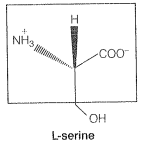How do enzymes catalyze a chemical reaction in the living system? Explain drug target interaction taking the example of the enzyme as a target.
In the catalytic activity, enzymes perform the following two major functions
(i) The first function of an enzyme is to hold the substrate molecule for a chemical reaction. the active sites of the enzymes hold the substrate molecule in a suitable position so that it can be attacked by the reagent effectively.
The substrate molecules bind to the amino acid residues of the protein present the active site of the enzyme through a variety of interactions such as hydrogen bonding, dipole-dipole interactions, van der Waals interactions, and ionic bonding.
These binding forces should be strong enough to hold the substrate long enough so that the enzyme can catalyze the reaction, but weak enough to allow the products to depart after their formation.

(ii) The second function of the enzyme is to provide functional groups that will attack the substrate to carry out the chemical reaction. This function is carried out by some other amino acid residues of protein present on the active site of the enzyme.
These provide free amino groups to attack the substrate and bring about the chemical reaction. If the amino acid serine is present nearby the substrate held on the active site, then its - OH group is free to act as a nucleophile in the enzyme-catalyzed reaction.

The part of the amino acid which lies outside the box act as a nucleophile in enzyme-catalyzed reactions, but the part of the amino acid which is enclosed in the box is involved in the formation of the peptide bond in the protein molecule.

© 2025 GoodEd Technologies Pvt. Ltd.